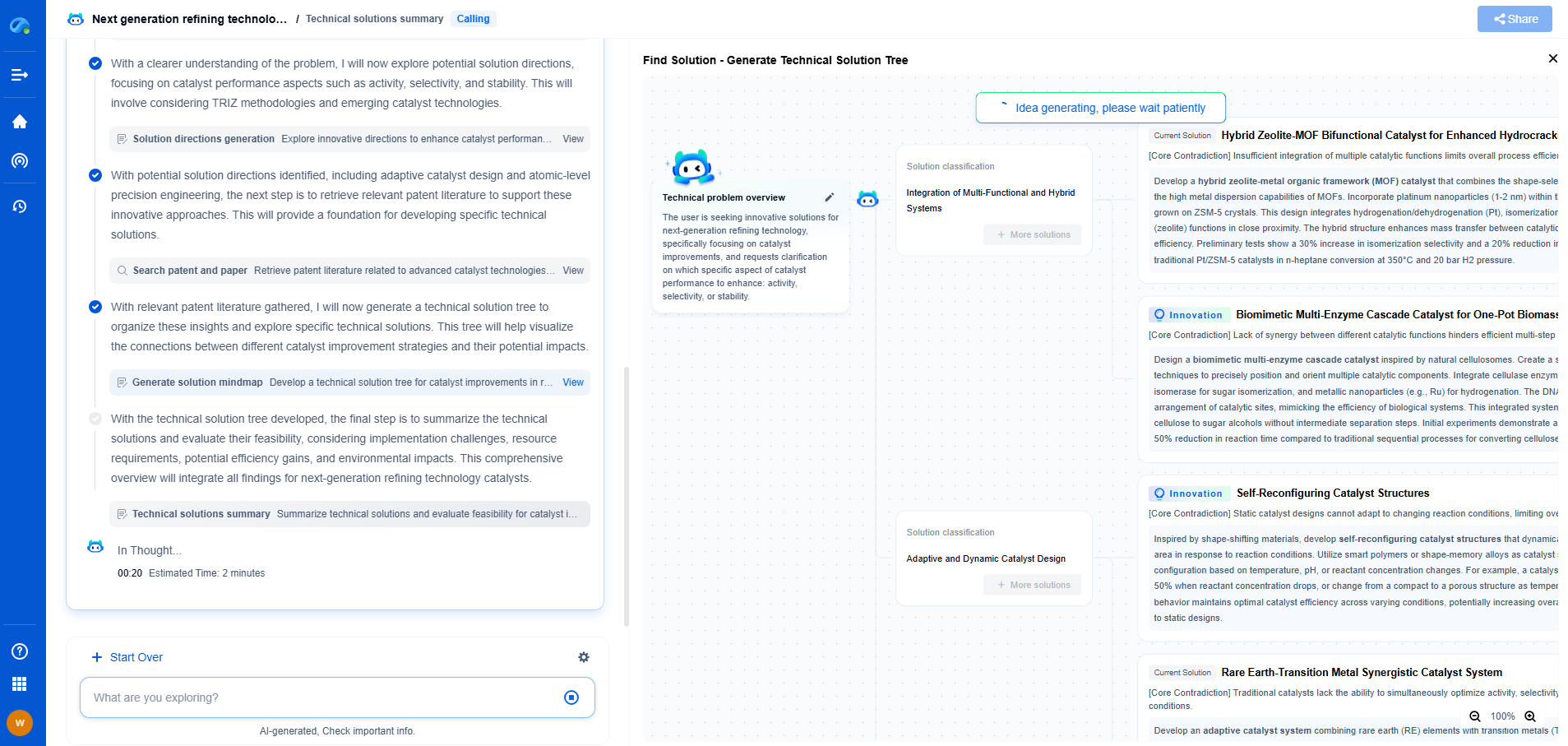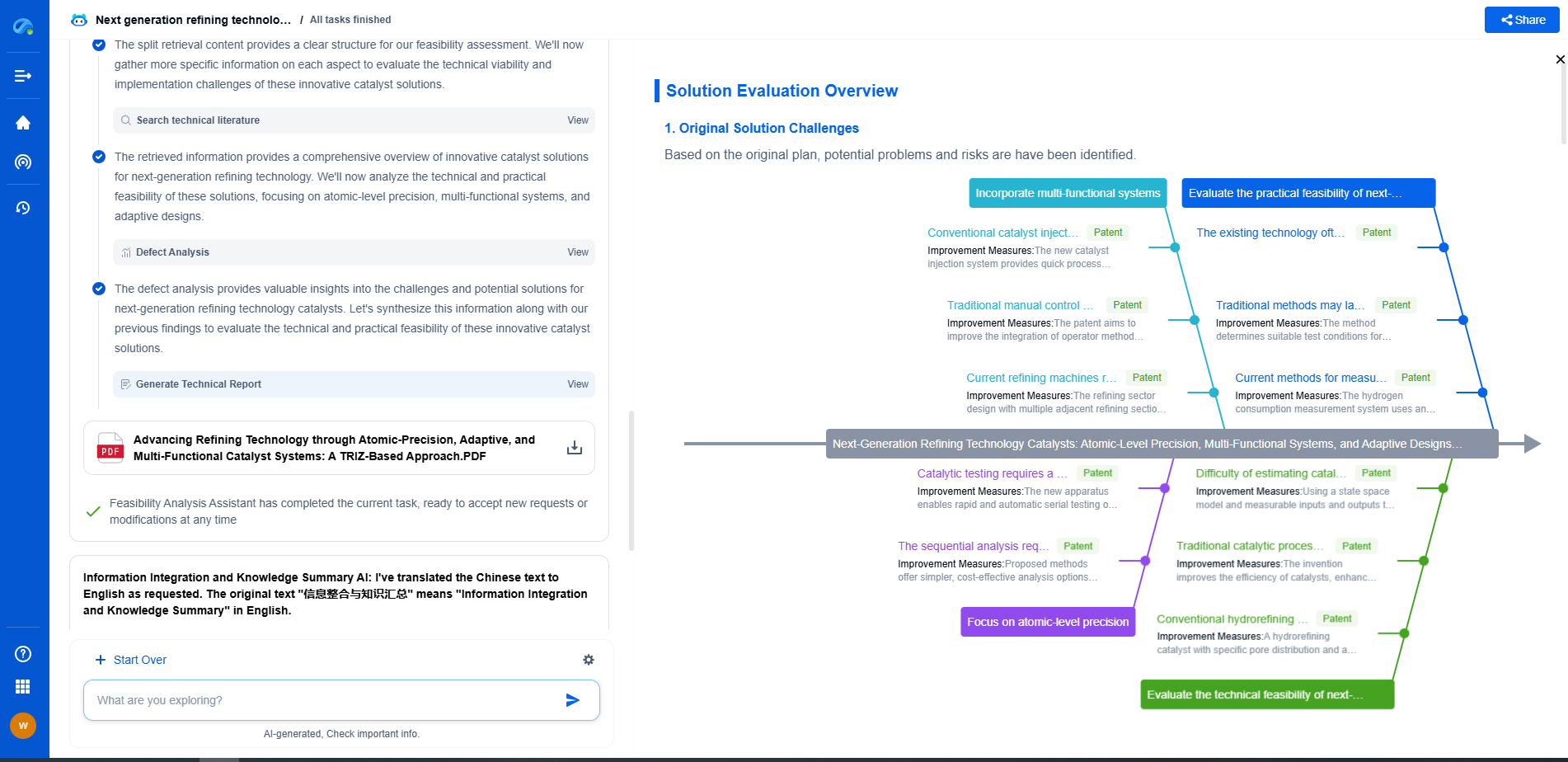Water-Cooled vs. Air-Cooled Laser Chillers: OPEX and Stability Tradeoffs
JUN 26, 2025 |
Understanding Laser Chillers
Before diving into the comparison, it's essential to understand what laser chillers do. These systems remove excess heat generated during laser operation, maintaining a stable temperature to prevent overheating. The choice between water-cooled and air-cooled systems can significantly impact the long-term efficiency and cost-effectiveness of a setup.
Operational Expenditure Considerations
Water-Cooled Chillers: Water-cooled systems are often seen as more efficient, especially in larger installations. They typically require a cooling tower or a water source, which can add to the initial installation costs. However, their energy efficiency can lead to lower operational costs over time. Water-cooled chillers often have better heat exchange rates, which translates into less energy consumption per unit of cooling.
Air-Cooled Chillers: Air-cooled chillers, on the other hand, generally have a lower upfront cost because they do not require additional infrastructure like cooling towers. They use ambient air to dissipate heat, making them simpler and less expensive to install. However, their energy efficiency can be lower than that of water-cooled systems, especially in high-temperature environments, potentially leading to higher energy bills over time.
Stability and Performance
Water-Cooled Chillers: In terms of stability, water-cooled chillers typically offer superior performance. They provide consistent cooling regardless of external temperatures, which is particularly advantageous in environments where ambient temperatures vary greatly. This stability ensures that lasers can operate at precise temperatures, which is crucial for applications requiring high precision and reliability.
Air-Cooled Chillers: While air-cooled systems are generally easier to install and maintain, their performance can be affected by external temperature fluctuations. In hot climates, air-cooled chillers might struggle to maintain optimal temperatures, potentially impacting laser performance. However, for environments with moderate climates, they often provide sufficient stability without the need for complex infrastructure.
Maintenance and Longevity
Water-Cooled Chillers: These systems often require more regular maintenance due to the complexity of their setups. Keeping the water supply free of contaminants and ensuring the cooling towers operate efficiently can demand additional resources. However, with proper maintenance, water-cooled chillers can offer excellent longevity and reliability.
Air-Cooled Chillers: Generally, air-cooled systems are easier to maintain because they have fewer components. Their simpler structure results in fewer opportunities for mechanical failure. Regular cleaning to prevent dust and debris build-up on the coils can suffice for routine maintenance, which can be an attractive feature for businesses looking to minimize downtime.
Environmental Considerations
Water-Cooled Chillers: The environmental impact of water-cooled chillers can be significant, particularly concerning water usage. In areas where water is scarce or expensive, this can be a downside. However, newer water-cooled systems are increasingly designed with water-saving technologies to minimize environmental impact.
Air-Cooled Chillers: An advantage of air-cooled systems is their minimal water usage, which can be a critical factor in regions with water scarcity. However, their energy consumption is typically higher, which could offset environmental benefits depending on the energy grid's sustainability.
Conclusion
Choosing between water-cooled and air-cooled laser chillers involves balancing operational expenditure, stability, maintenance, and environmental impact. Water-cooled chillers offer efficient cooling with potential energy savings over time and are ideal for environments demanding high stability. In contrast, air-cooled chillers provide a cost-effective, low-maintenance solution, suitable for moderate climates and installations where water resources are limited. Understanding these tradeoffs will help businesses make informed decisions that align with their operational goals and environmental considerations.
Empower Electromagnetic Innovation with Patsnap Eureka
From high-frequency antenna arrays and electromagnetic shielding to plasma propulsion and wave-based energy transfer, the electromagnetic domain sits at the core of next-generation technologies. Yet navigating its vast landscape of patents, research papers, and evolving technical standards can be time-consuming and complex.
Patsnap Eureka, our intelligent AI assistant built for R&D professionals in high-tech sectors, empowers you with real-time expert-level analysis, technology roadmap exploration, and strategic mapping of core patents—all within a seamless, user-friendly interface.
👉 Experience Patsnap Eureka today and transform how your team navigates the complexity of electromagnetic innovation.
- R&D
- Intellectual Property
- Life Sciences
- Materials
- Tech Scout
- Unparalleled Data Quality
- Higher Quality Content
- 60% Fewer Hallucinations
Browse by: Latest US Patents, China's latest patents, Technical Efficacy Thesaurus, Application Domain, Technology Topic, Popular Technical Reports.
© 2025 PatSnap. All rights reserved.Legal|Privacy policy|Modern Slavery Act Transparency Statement|Sitemap|About US| Contact US: help@patsnap.com

